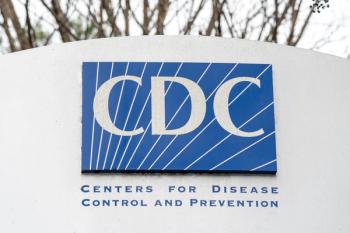RX Review: Collaborating to strengthen RSV prevention efforts

In this video, the last in a 3-part series, panelists discuss future directions in the field and the importance of multispecialty collaboration.
As RSV prevention tools expanded, clinicians faced new decisions around allocation, coordination, and outreach. In the final installment of this 3-part HCP Live Network RX Review roundtable, moderator Albert Rizzo, MD, chief medical officer of the American Lung Association, concluded the discussion with Tina Tan, MD, and Joanne Nazif, MD. The panel focused on how prevention strategies had evolved and emphasized the growing need for collaboration across pediatrics, pulmonology, and infectious disease.
The panel reflected on the shift in RSV immunoprophylaxis since the introduction of palivizumab in the 1990s. Tan noted that, following the approval of nirsevimab, some health systems redirected their use from term infants to neonatal units, resulting in reduced access for certain populations. With new monoclonal antibodies like clesrovimab becoming available, the group stressed the importance of understanding differences in viral targets and immune durability to inform future practice.
A central theme of the discussion was interdisciplinary collaboration. Tan emphasized that pediatricians, infectious disease specialists, and pulmonologists needed to work together more intentionally to ensure comprehensive prevention, particularly for infants, pregnant women, and older adults in multigenerational households. She underscored that RSV protection extended beyond pediatric care and should include vulnerable adults as part of a broader immunization strategy.
Rizzo drew comparisons to pulmonology’s longstanding use of multidisciplinary teams for chronic disease management and asked whether similar collaboration was being used in infectious diseases. Tan confirmed that many institutions already held routine team-based discussions for complex cases and encouraged the wider adoption of that approach for RSV and other preventable illnesses.
The panel closed with a call to raise awareness about RSV’s burden in older adults. While RSV had long been associated with pediatric illness, hospitalization and mortality rates remained highest among seniors. Promoting adult vaccination, they agreed, would be critical to reducing RSV’s overall impact.
This final episode highlighted the importance of clinical alignment and shared responsibility in protecting patients of all ages.
Our Panelists:
Tina Tan, MD, is a professor of pediatrics at the Feinberg School of Medicine at Northwestern University and an infectious disease physician. She is also medical director of the International Patient and Destination Services Program, president of the Lurie medical dental staff at Ann & Robert H. Lurie Children’s Hospital of Chicago, and president of the Infectious Disease Society of America.
Albert Rizzo, MD, is chief medical officer of the American Lung Association. Board certified in internal medicine, pulmonary, critical care and sleep medicine, Rizzo serves as the moderator for this panel discussion.
Joanne Nazif, MD, is an attending physician in the division of Hospital Medicine at Children's Hospital at Montefiore. She also serves as an associate professor of pediatrics at Albert Einstein College of Medicine.
Rizzo, Tan, and Nazif report no relevant disclosures.
Reference:
U.S. FDA Approves Merck’s ENFLONSIA™ (clesrovimab-cfor) for Prevention of Respiratory Syncytial Virus (RSV) Lower Respiratory Tract Disease in Infants Born During or Entering Their First RSV Season. News release. Merck. June 9, 2025. Accessed June 17, 2025. https://www.merck.com/news/u-s-fda-approves-mercks-enflonsia-clesrovimab-cfor-for-prevention-of-respiratory-syncytial-virus-rsv-lower-respiratory-tract-disease-in-infants-born-during-or-entering-their-fir/
Newsletter
Access practical, evidence-based guidance to support better care for our youngest patients. Join our email list for the latest clinical updates.










